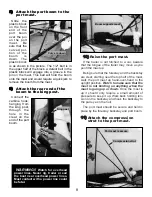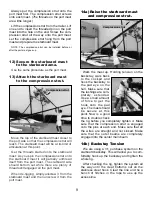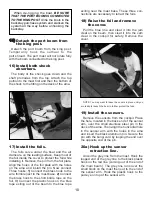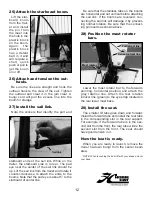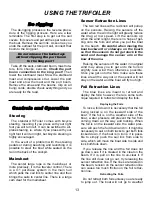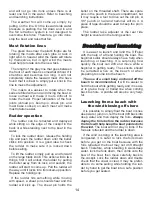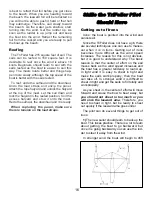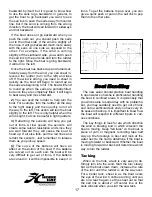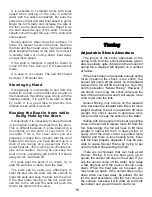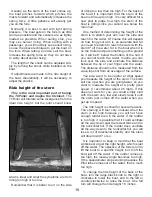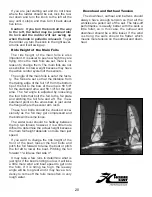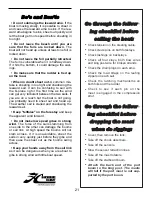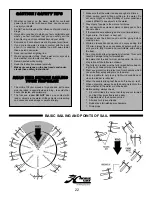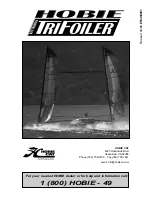
22
BASIC SAILING AND POINTS OF SAIL
•
Make sure that the water is deep enough at all times.
•
When sailing, avoid hitting anything in the water. Do
not sail at night or when visibility or water conditions
make it difficult to see objects in the water.
•
Stay clear of people in the water at all times.
•
Do not sail with equipment which is damaged or has
been modified.
•
If the leeward ama submerges, sheet out immediately.
•
A good rule: If in doubt... sheet out.
•
Always check the direction you will be going before
making a turn.
•
While an inexperienced person can enjoy sailing the
TriFoiler, always have an experienced person with you
until you are fully trained and comfortable with sailing
the boat.
•
Do not sail with either foil partially retracted. This could
result in damage to the foil mechanism.
•
Be aware that the boat will not sail upwind, Go into or
stay in irons if the foils are not down.
•
The foils and rudder must be fully raised before beach-
ing the boat. Always raise the rudder first.
•
Wear eye protection to protect you from hazards which
can arise from spray and glare on the water.
•
Carry a paddle to help in very light wind conditions or
when the rudder is retracted.
•
When the wind is strong, reef the sails. If in doubt... reef.
•
When not sailing, always keep the boat pointed into the
wind whether in the water or on the beach.
•
Before sailing, always check:
•
All control lines to ensure that they are not twisted
and that they move freely and easily.
•
Adjustments of the bow sensor line.
•
All wires for broken strands.
•
Rudder and foil latching mechanisms.
•
Drain plugs.
C
CA
AU
UT
TIIO
ON
N // S
SA
AFFE
ET
TY
Y T
TIIP
PS
S
•
Whether on land or on the water, watch for overhead
power lines. Contact with power lines can cause seri-
ous injury or death.
•
Do NOT sail while under the influence of alcohol and/or
drugs.
•
Only sail in conditions in which you feel comfortable and
where you feel confident that you can safely sail the
boat. Never go out in conditions beyond your ability.
•
Everyone on board should wear a life jacket at all times.
•
If you are in the water, remain in contact with the boat,
even if it is capsized. A sailboat can drift away faster
than a person can swim.
•
Never sail without a righting line.
•
Wear appropriate clothes. Wear a wet suit or dry suit in
cold weather or cold water conditions.
•
Remain seated while sailing.
•
Read the instruction manual carefully.
•
Make sure everyone on the boat reads and under-
stands these safety instruction
s!
R
RE
EA
AD
D T
TH
HIIS
S B
BE
EFFO
OR
RE
E S
SA
AIILLIIN
NG
G
Y
YO
OU
UR
R T
TR
RIIFFO
OIILLE
ER
R
•
The Hobie TriFoiler moves at high speeds. Extra care
must be taken - especially when turning - to avoid other
boats, obstacles, and swimmers.
•
The foils and rudder
DO NOT
kick up on contact with
land or objects in the water. Hitting objects while sailing
can cause severe damage or personal injury.
Summary of Contents for TriFoiler
Page 1: ...ASSEMBLY MANUAL...

